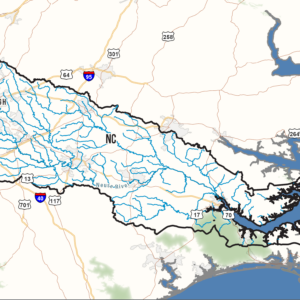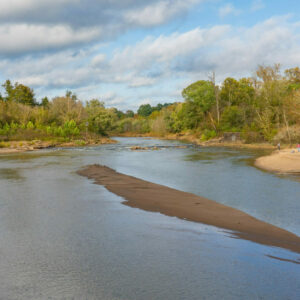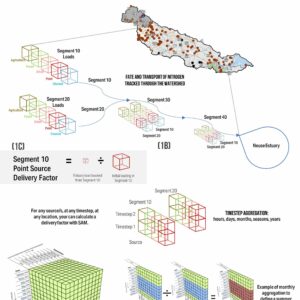Providing a Modeling Tool for Evaluating Modern Nutrient Reduction Strategies in the Neuse River Watershed
The Neuse Nutrient Strategy has been a successful tool in regulating major nutrient pollution sources in the Neuse River Watershed, including wastewater, urban stormwater, and agriculture. However, the Neuse River Estuary remains impaired, and a calibrated watershed model, a standard tool for developing and evaluating modern nutrient strategies, is not currently in place to support the Neuse Nutrient Strategy. To address this issue, the North Carolina Department of Environmental Quality’s Division of Water Resources awarded a contract to RESPEC to develop a watershed model for the Neuse River Basin that can be used to determine transport zones and delivery factors for point source discharges and nutrient offset credits.
RESPEC used the Source Fate and Transport Matrix, a unique support feature in RESPEC’s Scenario Application Manager (SAM), to evaluate delivery factors and nitrogen-trading options. SAM enables engineers and stakeholders to understand the delivery and transport of nitrogen from any modeled source to and from any subwatershed, represented for any portion of the modeled time period, at any timestep. The model accounts for all sources of nutrients in the basin and can run daily, with model calibration and performance evaluation conducted to ensure suitability for intended management uses. Stakeholder involvement was critical to the successful development of the model, and two public meetings and training sessions were provided for staff and interested parties.
The developed watershed model for the Neuse River Basin will aid in meeting regulatory requirements, support adaptive management efforts to protect and restore the Neuse River Estuary, and inform regulatory development and management decisions. Ultimately, this will improve water quality and protect the ecosystem and communities that benefit from it.






Stay in Touch